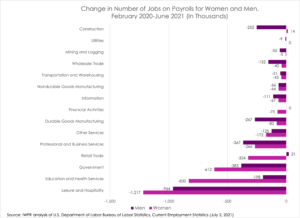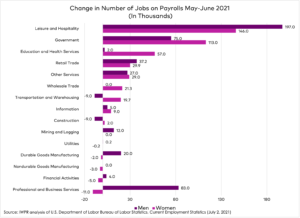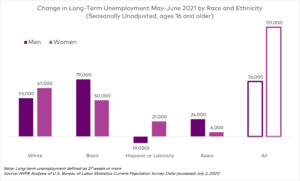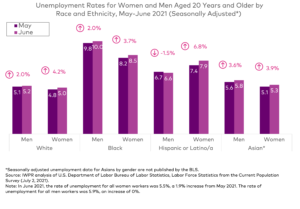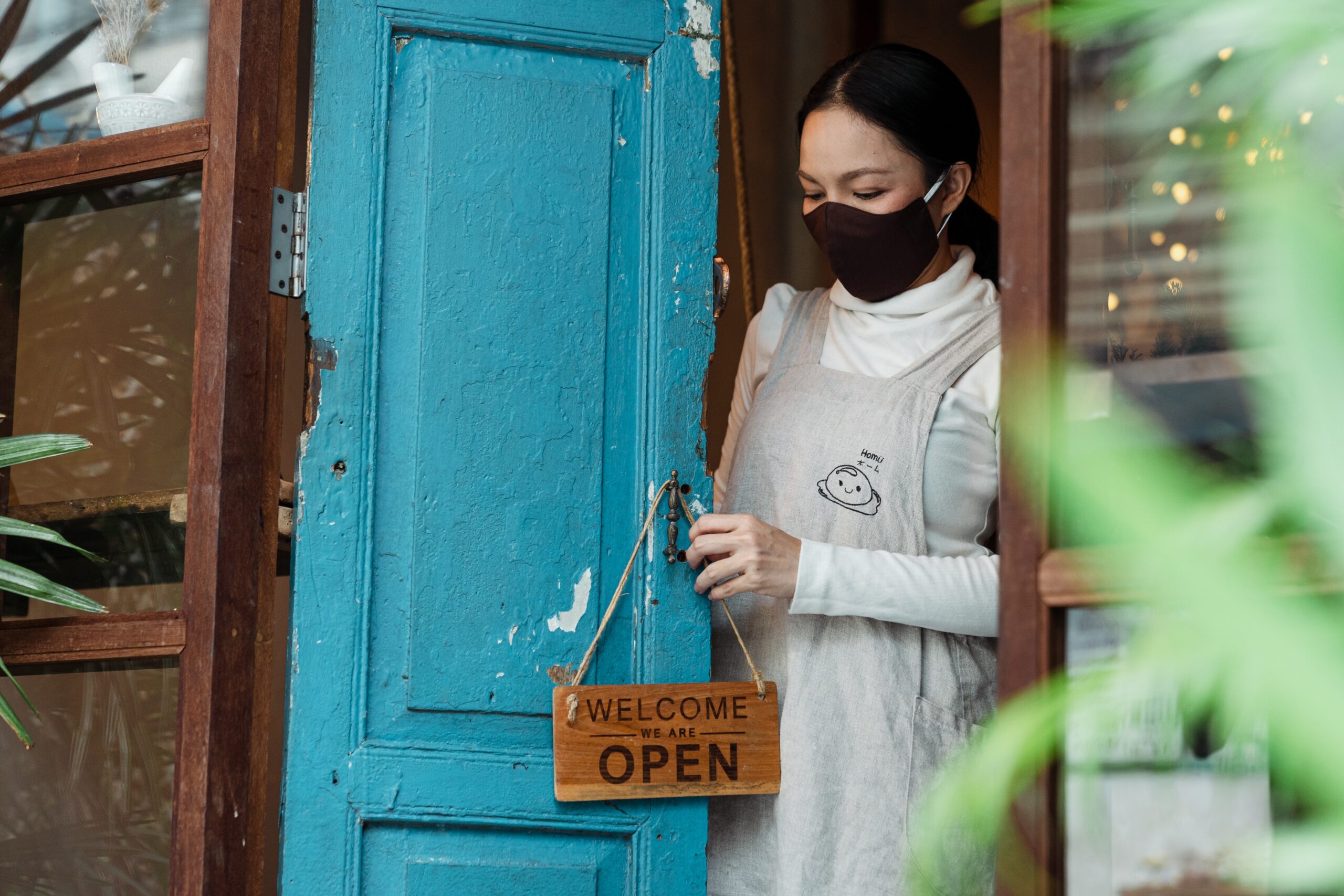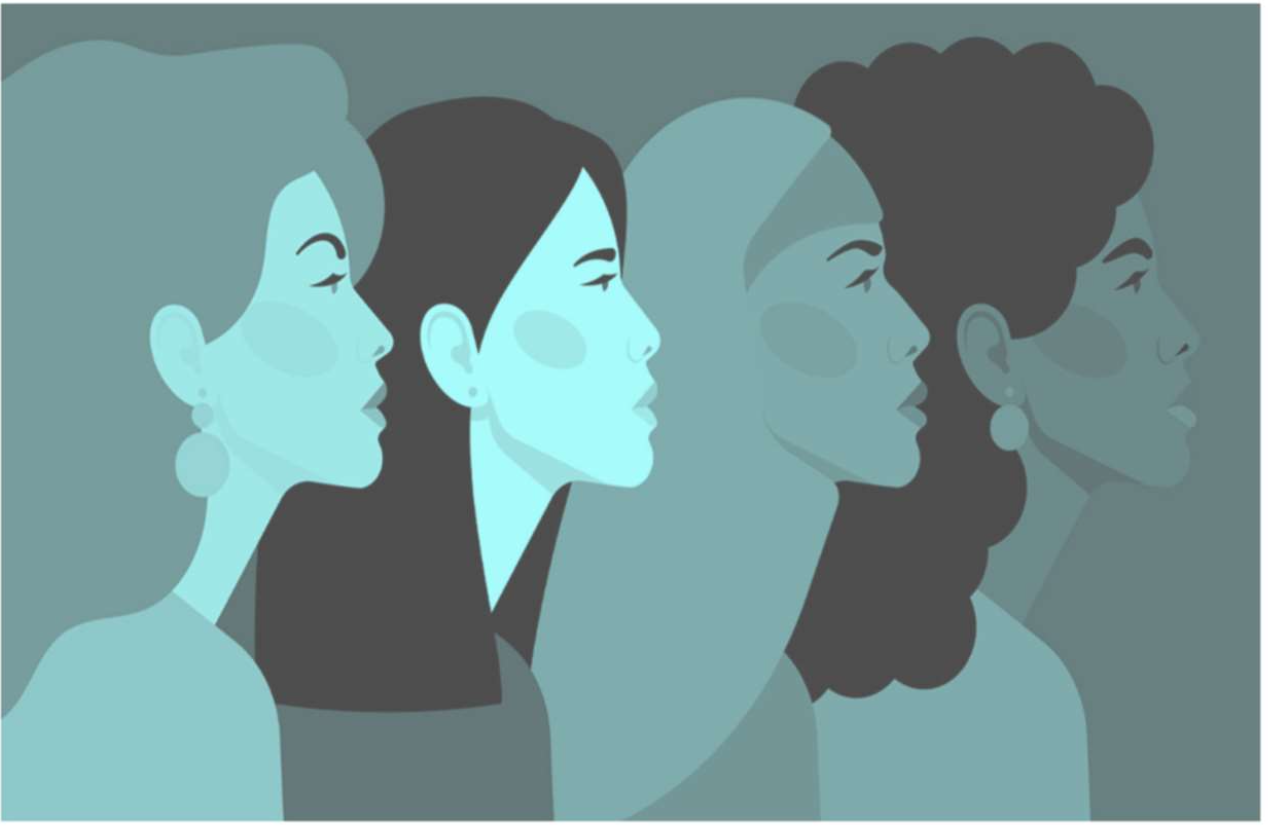FOR IMMEDIATE RELEASE – July 2, 2021
Contact: Erin Weber | weber@iwpr.org | (646) 719-7021
Washington, DC – This month’s jobs report from the Bureau of Labor Statistics (BLS) confirms substantial growth, with 405,000 new jobs on payroll for women (47.6% of 850,000 total). Yet, women’s jobs on payroll are still 3.8 million below pre-COVID-19 level, a greater number of jobs still missing than for men (3 million fewer jobs).
Women gained jobs in most sectors, with the strongest growth for women in Leisure and Hospitality (146,000 new jobs). Men’s job growth in Leisure and Hospitality, however, was much higher (at 197,000). The gains in this industry are notable, especially after much public concern about a labor shortage.
Women also gained 113,000 jobs in Government (men gained 75,000) and Education and Health Services (57,000 jobs compared with just 2,000 for men). But to get back to pre-pandemic levels, women still need 1.2 million jobs in Leisure and Hospitality, 830,000 jobs in Education and Health Services, and 612,000 jobs in Government.
Women lost 11,000 payroll jobs in Professional Services, while men gained 83,000.
“We are headed in the right direction and will see more job gains in the fourth quarter of the year for women when schools fully re-open,” said C. Nicole Mason, IWPR President and CEO. “There is still much work to be done, especially for women who have been unemployed for 27 weeks or more and in women-dominated sectors, such as child care and travel and leisure.”
The recovery has yet to reach everyone. The Institute for Women’s Policy Research analysis of the BLS data shows that long-term unemployment—of 27 weeks or more—increased for women across racial and ethnic groups, with women’s long-term unemployment growing by 151,000, twice as strongly as men’s (76,000). Almost four in ten (38.7%) unemployed women have been out of work for at least 6 months, compared with 40.5% men.
IWPR analysis of the new jobs data also shows an increase in unemployment for adult women across racial and ethnic groups from 5.4% to 5.5% (unchanged for adult men at 5.9%).
Strong racial and ethnic differences among women on the path to recovery continue. Black adult women’s unemployment is 1.7 times higher than White women’s, and Latinas’ unemployment is 1.6 times higher. Black women’s unemployment rate increased from 8.2 to 8.5%, Latinas’ from 7.4 to 7.9%, Asian women’s (seasonally unadjusted) from 5.1 to 5.3%, and White women’s from 4.8 to 5.0%.
“Unemployment, particularly long-term unemployment, continues to be a big challenge,” said IWPR’s Ariane Hegewisch. “Cutting unemployment benefits, as threatened by 22 states, is only going to deepen the economic devastation faced by many families.”
IWPR analysis of the Bureau of Labor Statistics report was provided by C. Nicole Mason, Ariane Hegewisch, Chandra Childers, Shengwei Sun, and Eve Mefferd.
